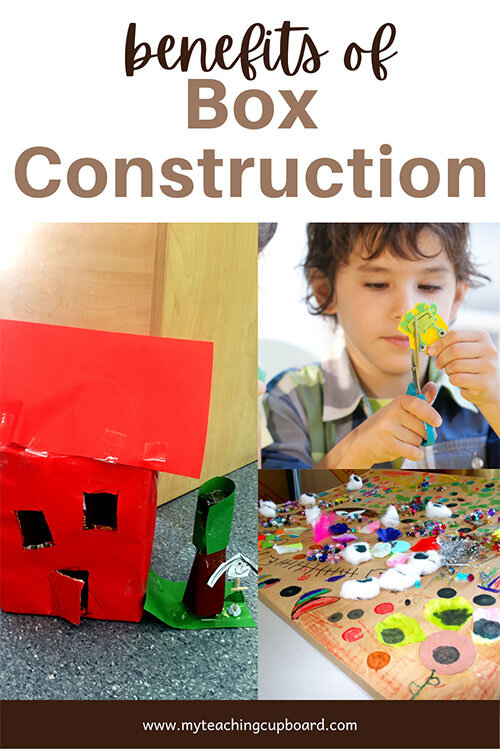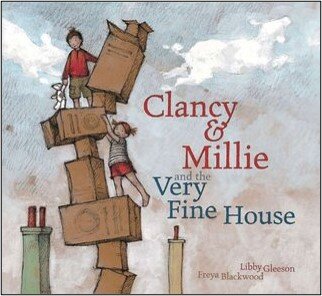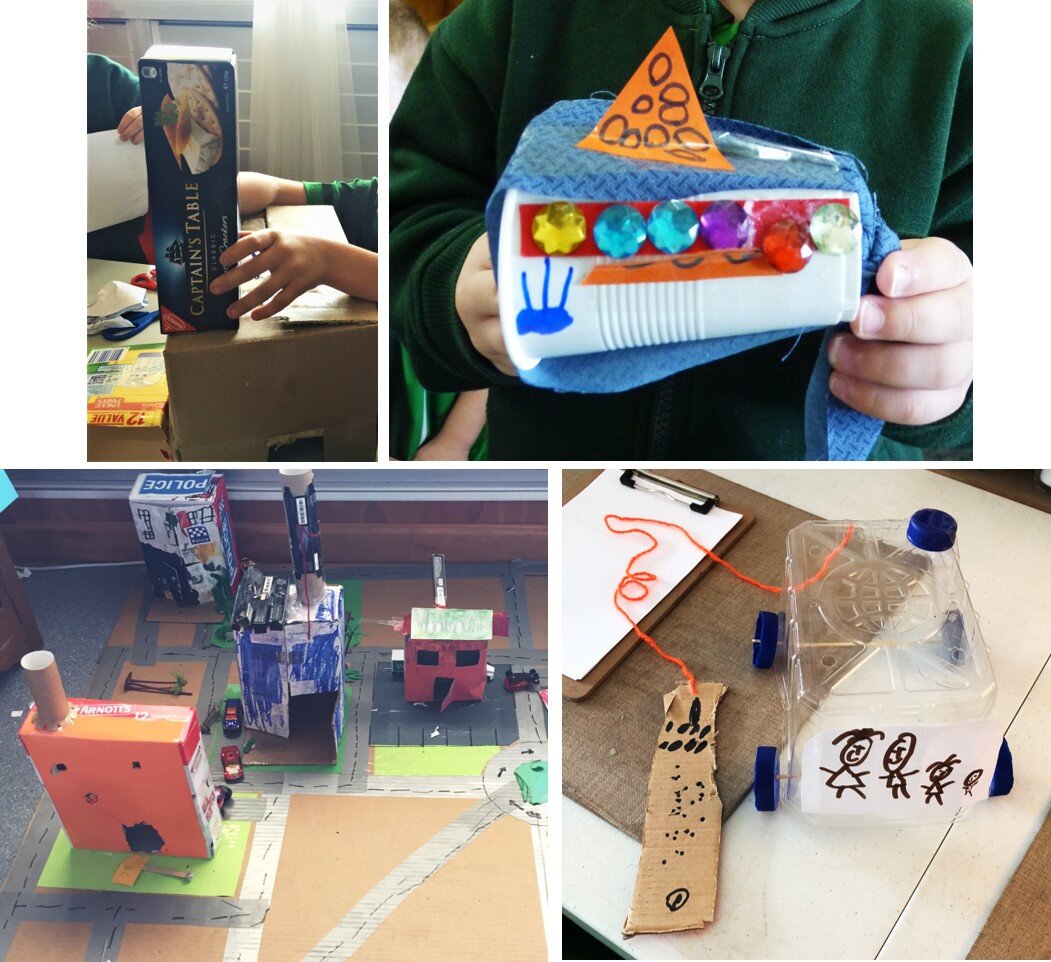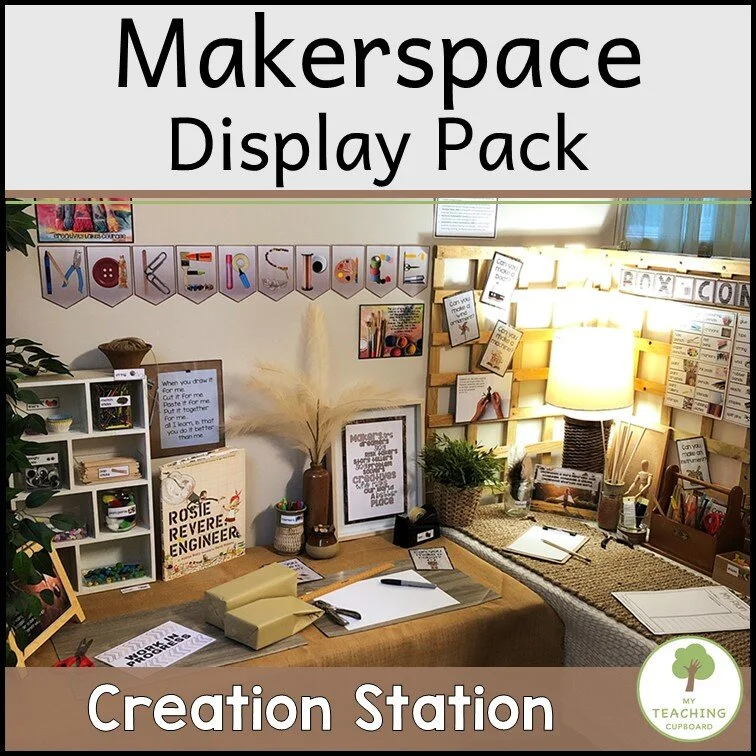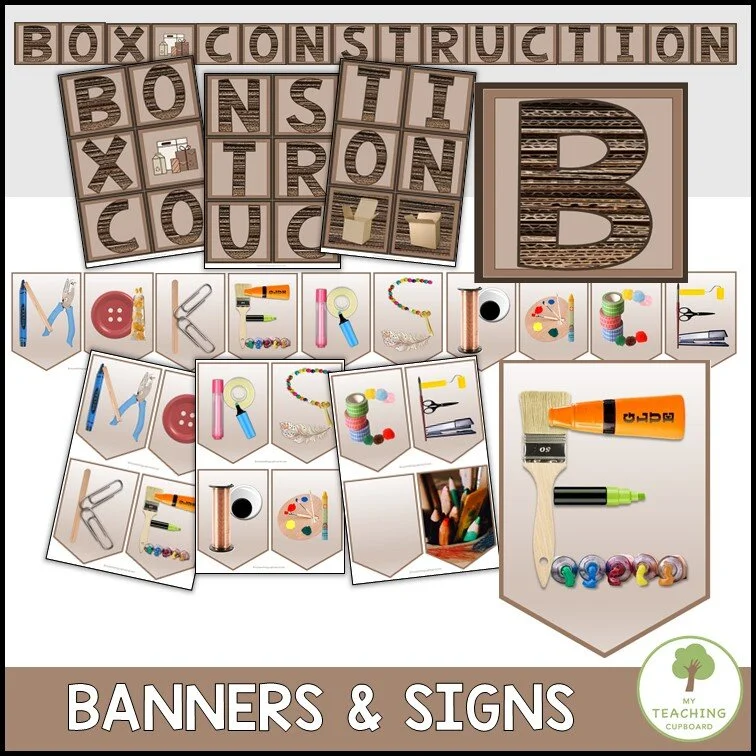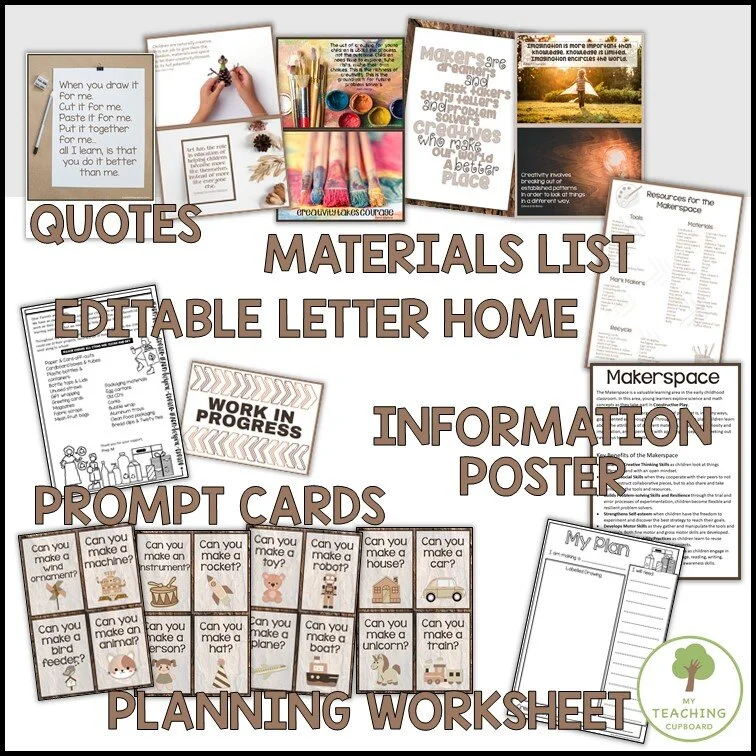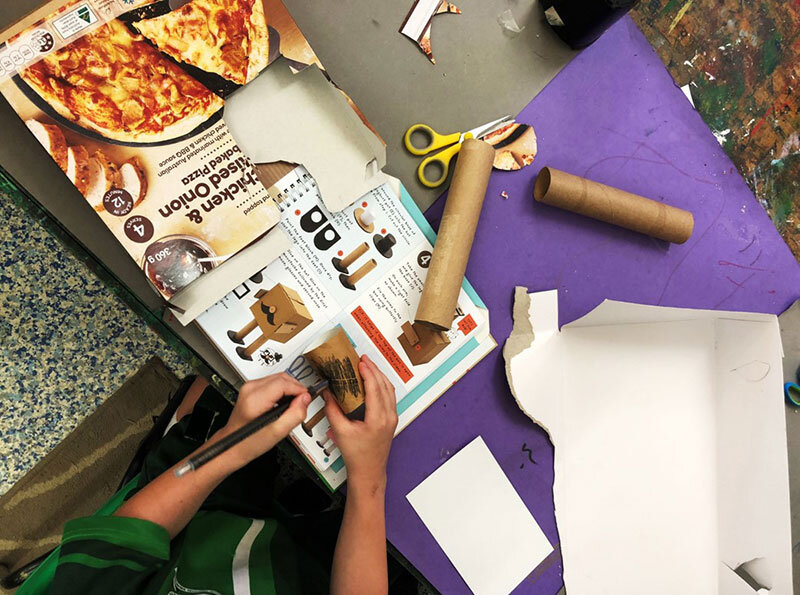How to Introduce Cardboard Box Construction
Box construction is an important play-based learning area in the early childhood classroom. In this area, preschool and kindergarten children explore science and math concepts as they take part in Constructive Play.
The term Constructive Play was first introduced by the child psychologist - Jean Piaget. He suggested that constructive play is what happens when children use toys or other materials to build or create something new.
There are many beneficial learning outcomes for children in early childhood classrooms if given the opportunity to use cardboard boxes and classroom collage supplies to build and create with.
Benefits of Cardboard Box Construction
· Enhances Creative Thinking Skills
· Teaches Social Skills
· Builds Problem-solving Skills and Resilience
· Strengthens Self-esteem
· Develops Motor Skills
· Reinforces Sustainability Practices
· Consolidates Literacy and Numeracy Skills
Some teachers have a Makerspace, or Box Construction Area, others call it the Collage Area or even the Creation Station. Whichever label you give to this hands-on learning area does not really matter. What matters is that you have an investigative space in your classroom where children can combine boxes and other collage materials together into three dimensional projects.
At the start of the school year, only a small selection of supplies are offered in our Makerspace.
As the year progresses, the children become more skilled at using and maintaining this creative learning area. They begin to use it productively and start to keep it organised and tidy. When this happens, more varied collage items can be added.
Collage Materials for the Makerspace at the Start of the School Year
A limited selection of materials are available in our Makerspace at the start of the school year. Most of them are collected and donated by our parents and the community. There is a strong emphasis on collecting useful junk which may have otherwise ended up in the rubbish bin and land fill.
We have a large wooden drama box holding recycled cardboard boxes – cereal boxes, tissue boxes, small packaging boxes from mail deliveries etc. Cardboard tubes are also included in this box.
If you like the sign for our box construction boxes, you can download it for free from Miss Anna on Teachers Pay Teachers HERE.
It is necessary to have a few options for joining the boxes and collage materials together. We offer masking tape, wide cello tape on a dispenser, glue paste and glue sticks. We also have a collection of donated strips of sticker sheet off cuts from a printing company. Peeling the backing from adhesive strips of sticker paper or adhesive contact are excellent ways to develop fine motor skills.
We also provide the little makers with a small selection of Makerspace tools: scissors, hole punches, rulers, staplers and a selection of mark making equipment: crayons, felt-pens and pencils.
A tray on the collage shelf stores decorative papers and thin card. There are plain and patterned papers from unwanted scrapbooking supplies, wrapping paper and printing companies.
Finally, there are a few baskets of traditional collage materials: pop sticks, matchsticks, pompoms, feathers, recycled caps and lids, pattycake liners, small fabric scraps, googly eyes, wool or string and pipe cleaners.
At the very start of the year, the children are encouraged to freely explore and use the materials in the Makerspace. Usually this consists of the children sticking random collage supplies all over a piece of paper or cardboard box. There is usually no vision of an end product in their minds. This initial exploration period is simply an opportunity to experiment with the tools and supplies in the area.
In Piaget’s study of Constructive Play, he researched the learning habits of young children. Piaget found that before children get to the constructive play stage required in box constructions, they need to pass through a prior stage known as functional play.
In other words, before children begin to construct, they would have extensively explored their play materials to have an idea of how to effectively use them. The children exploring the materials in our Makerspace at the beginning of the year are working in the functional stage of play. The exploration and experimentation of the resources are pre-requisites to future box constructions.
Creative Process over Product in the Makerspace Classroom
At the end of our class investigative play session, we have a reflection time. During our learning reflections, we discuss the materials offered in the Makerspace and all the possible projects these materials could be used for. We discuss effective methods for joining boxes together and how to paint or cover cardboard boxes so that our final creative projects are a little more professional.
Reflection time also provides many opportunities for the teacher to model:
how to use a stapler safely and correctly,
how to find the end of the cello tape roll,
how to use just a tiny piece of tape instead of a whole arm’s length,
how to cut around a shape by turning the paper and not the scissors etc.
These modelled lessons in correct tool use and the purposeful, thoughtful use of the collage materials are vital if you want the children to use the Makerspace productively in the future.
Frustrations can arise for both teachers and students when box constructions commence.
Sometimes children will have an idea in their mind for their project and that idea will be very different to the reality of how their cardboard construction actually turns out. With a change in thinking, and a little teacher encouragement, children’s creative projects and constructions can be celebrated by honouring the process rather than the product.
As teachers, we should always praise the creative thinking and perseverance displayed by children who complete a box construction project. It may not be the exact representation of what they imagined, but the processes of wondering, imagining, creating, discovering, experimenting, failing, re-thinking and problem solving are so much more important! Celebrate the Process over the Product.
Introducing Box Construction
After a few weeks of allowing the children to experiment with the resources, it is time to introduce box constructions. From this day on, the projects in the Makerspace become purposeful and project based. Some children will continue to randomly cover a box with every collage material available, but most will begin to construct purposeful and professional projects.
First …
We start the lesson by reading Clancy and Millie and the Very Fine House written by Libby Gleeson and illustrated by Freya Blackwood.
Clancy and his parents have moved into a new house. Clancy’s mum thinks the new house is better – the best house. But Clancy misses his old home; the cubby house under the table, the crackly fireplace, the moon through the skylight. Clancy finds a pile of moving boxes outside, and his new neighbour Millie appears just in time to help him use big packing boxes to build different things like towers and trains and his own special cosy space – a very fine house.
We discuss how Clancy and Millie (the story characters) used the boxes in the story and how we could also use cardboard boxes to make special things – projects!
Then …
We watch the Box Construction PowerPoint presentation. This is an inspirational presentation containing images from the internet of all manner of marvelous box constructions. So many box construction ideas are introduced in this PowerPoint. You can download it from my FREE Resource Library HERE.
If you are not already on my email list,
you can sign up and get instant access to all the FREE resources here.
After viewing the Box Construction PowerPoint, we brainstorm all the things we could make from cardboard boxes. We listen to each other’s suggestions on how we could change the boxes and what we would do to turn them into our imagined projects.
I model how to write a list of resources that we might need for our future box constructions. The list is written on a large poster size piece of paper. It will become a valuable reference for the children when they complete their own box construction plans in the future.
Finally …
I introduce the Makerspace planning sheet. This is a blank planning template for children to record their thoughts and ideas for box constructions and other Makerspace projects. It has a place for the children to draw (and hopefully label) their project idea and there is also a place to list the resources they will need for their project.
Each child is given a blank Makerspace planning sheet to record one of the exciting project ideas the Box Construction PowerPoint presentation has inspired them to create. The children are always so excited with the possibilities. They eagerly discuss and record their ideas with their friends. There is usually a real buzz of excitement in the room.
The Planning Sheet is part of the Makerspace Display Pack. You can purchase it HERE in my store.
The next day, during our investigative play session, some children may act on their box construction plans and begin planned projects. The children are not required or expected to immediately follow through with the project ideas they recorded on the planning sheet the day before.
It would not be possible to have everyone working on box constructions at once.
The box construction area really only caters for 4 or 5 children at a time.
You can read more about box constructions and how to set up play based learning spaces HERE – The 10 Essential Areas of a Play Based Classroom.
Sometimes children do not complete their Makerspace projects in one session and so for this reason, we have Work In Progress signs and labels. The children know to put a little Work in Progress sign on their work if they need to leave the Makerspace and do not want anyone to touch their project while they are away. We also have a large storage crate to hold unfinished projects. This crate is labelled with a larger Work in Progress sign.
The Work in Progress signs are also part of the Makerspace Display Pack in my store. You can download them and all the other Makerspace resources from my store HERE.
THIS MAKERSPACE PACK CONTAINS:
Makerspace Banner Sign
Comprehensive list of materials for your Makerspace
EDITABLE Letter to send home asking for boxes and other useful recyclables
Large Box construction sign
Planning worksheet
68 illustrated Makerspace vocabulary cards illustrated with photo images—tile print these cards to make a Word Wall and turn them into resource labels to keep your area tidy and organised.
4 EDITABLE Makerspace vocabulary cards
Large Work in Progress Label
2 Small Work in Progress signs
Information Poster for parents and educators
8 inspirational Poster quotes
16 Makerspace prompt cards
We started our introductory lesson on box constructions by reading Clancy and Millie and the Very Fine House. There are many other wonderful picture books related to box constructions, a Makerspace and the related STEAM education.
See our 5 MUST-HAVE Maker Space picture books HERE.
Using children’s picture books to teach behaviours or concepts you want to promote in your classroom learning areas is an excellent teaching strategy.
Classroom Maker Spaces should be tweaked and individualised to cater for the early years children who use them. I hope you use this blog as inspiration to set up your own box construction area and I would really love to see how you set yours up. Tag #myteachingcupboard on Instagram HERE or post in my Facebook group HERE so we can keep in touch.

